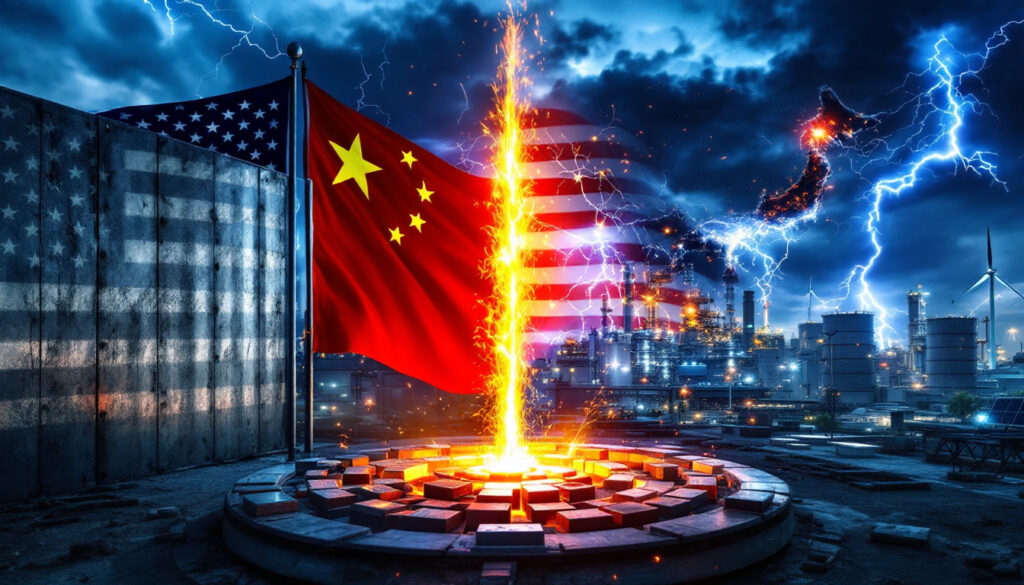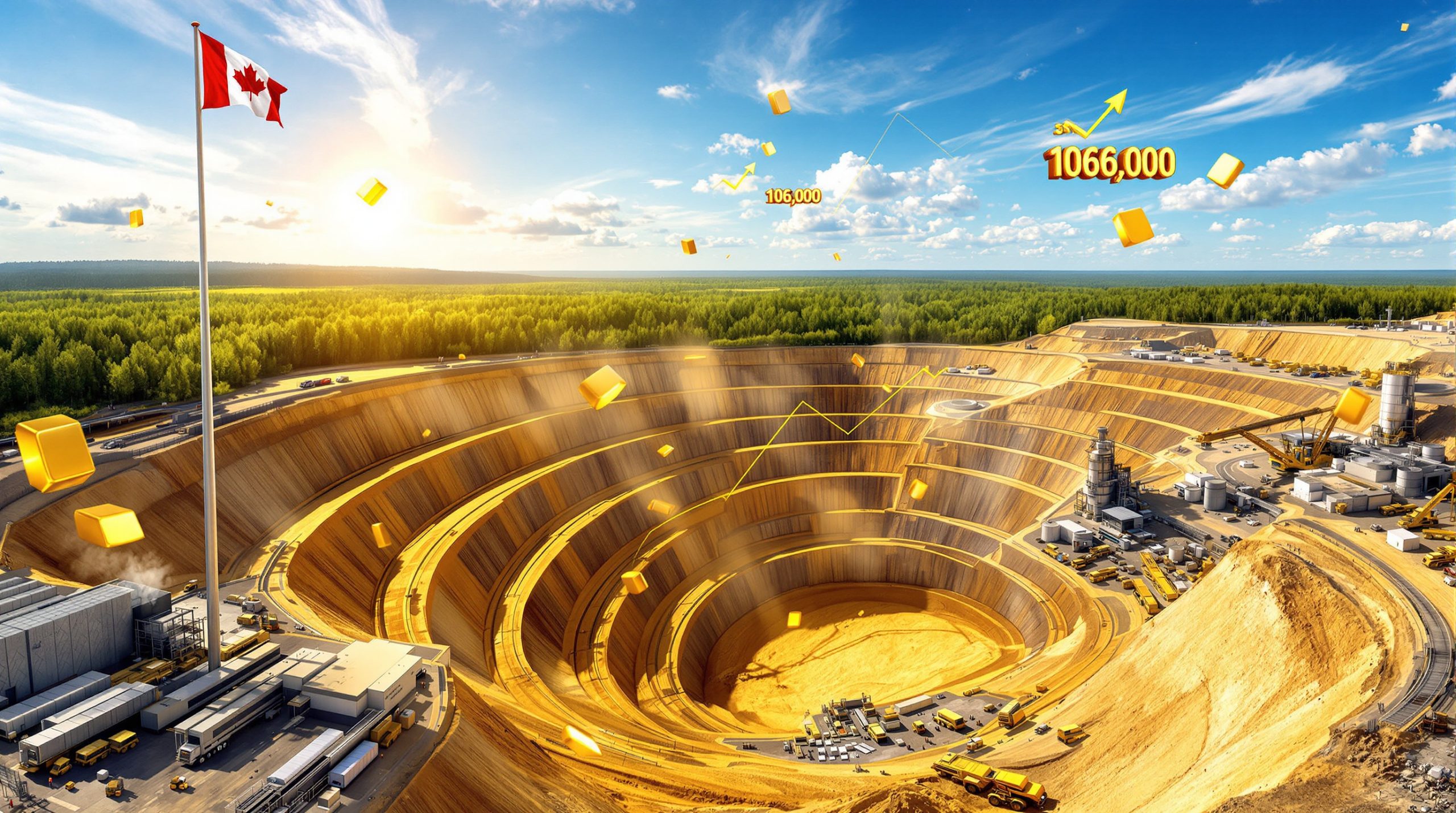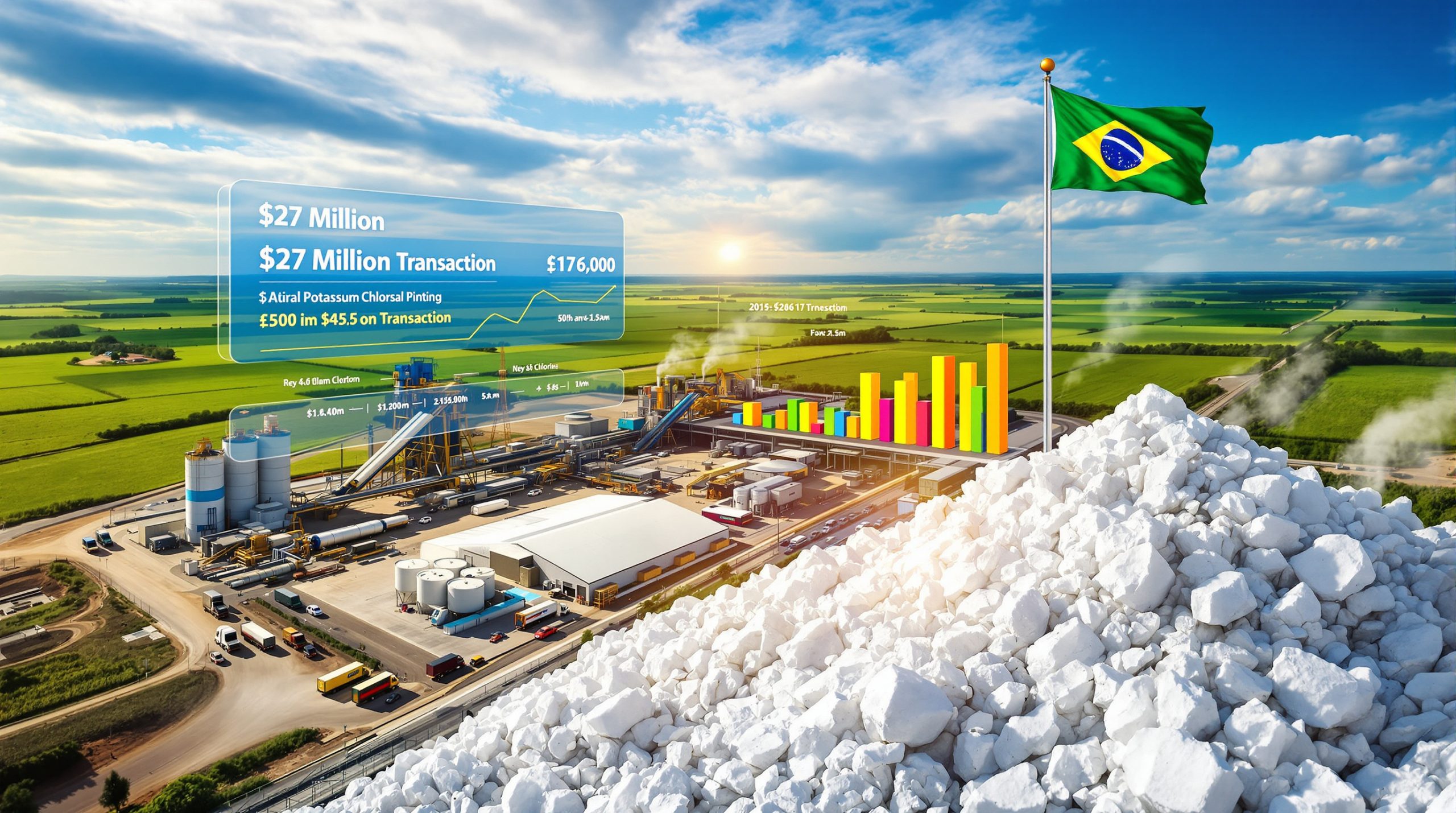US-China Trade War and Its Impact on Asia's Ferro-Alloys Sector
The ongoing US-China trade tensions have reshaped global supply chains, particularly in the ferro-alloys sector. As tariffs and trade restrictions continue to disrupt traditional market dynamics, Asian producers have found themselves navigating challenges while simultaneously discovering new opportunities. This shifting landscape has created a complex yet potentially profitable environment for ferro-alloy manufacturers across Asia. The US-China trade war and Asia's ferro-alloys sector have become increasingly interconnected as manufacturers adapt to changing geopolitical realities.
How Has the US-China Trade War Created New Opportunities for Asian Ferro-Alloys Producers?
The trade conflict between the world's two largest economies has forced Asian ferro-alloys producers to diversify their export markets and rethink their business strategies. This disruption, while challenging, has opened doors to previously untapped markets and created new trade flows across the region. How Trump's policies are reshaping global commodity markets has been particularly evident in the ferro-alloys sector.
Market Exploration Beyond Traditional Boundaries
Southeast Asia, the Middle East, and Africa have emerged as growing centers of demand for ferro-alloys, presenting alternative markets for Asian producers affected by US-China tensions. This shift coincides with accelerating infrastructure development and industrialization across these regions, driving increased consumption of steel and related alloys.
China, India, and Malaysia currently stand as the top ferro-alloys producers in Asia, with combined production capacity accounting for over 65% of the region's output. Their geographical advantage allows these producers to capitalize on emerging markets with minimal logistical challenges.
Industry analysts project approximately 30 million tonnes of crude steel capacity will be added in Southeast Asian nations over the next decade. This expansion will necessitate roughly 1 million tonnes of additional ferro-alloys, creating substantial growth opportunities for regional producers.
The geographic proximity of Asian producers to these emerging markets offers significant transportation and cost advantages. Shipping ferro-alloys from India to Vietnam, for instance, costs approximately 40% less than equivalent shipments from South Africa or Brazil, enhancing regional competitiveness.
Potential Growth in US Ferro-Alloys Imports
Paradoxically, trade tensions have likely increased stainless steel production within the United States as domestic manufacturers seek to reduce dependency on Chinese imports. This shift has created higher demand for imported ferro-chrome and other alloys essential to stainless steel production.
Industry reports indicate US imports of ferro-chrome increased by 12.3% in 2024, with Asian suppliers capturing a growing share of this market. Similar import patterns are expected for other ferro-alloys categories, including ferro-manganese and silico-manganese.
As US steel producers seek alternatives to Chinese materials, Asian suppliers from India, Malaysia, and other regional producers are positioned to fill these supply gaps. This realignment represents a significant opportunity for Asian producers to establish stronger footholds in the American market. The role of US cobalt miner tariffs in balancing growth reveals similar patterns across mineral supply chains.
How Is Domestic Demand Buffering Export Market Volatility?
While international markets face disruption, strong domestic consumption within key Asian economies has provided a stabilizing effect for ferro-alloys producers. This home market strength offers a buffer against global market uncertainties.
India's Infrastructure and Manufacturing Boom
The ongoing shift from globalization to localization has created stronger domestic markets in several Asian countries, particularly India. The country's ambitious infrastructure plans and growing manufacturing base have sustained demand for steel and ferro-alloys despite global trade disruptions.
India produced 26.4 million tonnes of crude steel in the first two months of 2025, representing a 6.8% year-on-year growth. This follows a robust 6.3% growth recorded throughout 2024, demonstrating the resilience of India's steel sector amid global uncertainties.
The manganese alloy market in India remained particularly strong in Q1 2025, with domestic consumption increasing by approximately 8.2% compared to the previous year. Rising demand from the downstream steel sector has supported market stability even as export markets fluctuate.
Multiple Indian ferro-alloy producers reported operating at near-full capacity in early 2025, with approximately 85-90% of production absorbed by domestic consumers. This strong local demand provides a stable foundation for producers navigating volatile international markets.
India's Ambitious Stainless Steel Expansion Plans
India's stainless steel sector has outlined aggressive growth targets that will further boost domestic ferro-alloys consumption. The country projects capacity expansion to 9.3-9.5 million tonnes by 2030, with further growth to 12.5-12.7 million tonnes by 2040.
The long-term vision, according to the Indian Stainless Steel Development Association (ISSDA), targets an impressive 19-20 million tonnes of capacity by 2047. This would represent a nearly 300% increase from current production levels, necessitating substantial growth in ferro-chrome and other alloy inputs.
Japanese ferro-chrome buyers have already reported higher offers and reduced shipment availability from Indian suppliers, indicating the increasing dominance of domestic consumption. Several Japanese steel mills noted a 5-8% reduction in ferro-chrome imports from India during Q1 2025 compared to previous years.
What Sustainability Initiatives Are Transforming the Ferro-Alloys Industry?
Environmental considerations are rapidly reshaping the ferro-alloys industry across Asia, with sustainability becoming a competitive advantage in both domestic and international markets.
Green Production Methods and Energy Efficiency
Asian companies are increasingly investing in advanced technology for sustainable ferro-alloy production. This shift is driven by both regulatory pressure and changing customer preferences, particularly from export markets with strict environmental standards.
China has taken the lead in green development of the ferro-alloy industry, with multiple smelters obtaining green certificates for ferro-chrome, ferro-manganese, silico-manganese, and ferro-silicon. These certifications verify reduced carbon emissions throughout the production process, enhancing competitiveness for both local and international buyers.
The introduction of carbon border adjustment mechanisms in Europe has accelerated sustainability investments across Asia's ferro-alloys sector. Several Chinese producers have reduced carbon emissions by 30-40% through technological upgrades, creating potential for their steel exports to enter European markets requiring low-carbon-emission products.
The green transition has also spurred innovation in renewable energy integration. In India, approximately 22% of ferro-alloy production now incorporates solar or wind power, with plans to increase this proportion to 35% by 2030. These efforts align with broader transforming the mining industry: ESG challenges and opportunities across the resources sector.
Green Ferro-Alloy Price Assessments
Market mechanisms for valuing sustainable production have begun to emerge, though price premiums remain elusive in the short term. Fastmarkets' weekly green ferro-alloy domestic ferro-chrome assessment has remained at zero yuan differential, indicating no immediate price advantage despite environmental improvements.
The green ferro-chrome inferred price stood at 7,800-8,000 yuan ($1,074-1,101) per tonne as of March 25, matching conventional production pricing. Similarly, the green ferro-manganese differential remained at zero yuan per tonne, unchanged since November 2024, with an inferred price of 5,400-5,600 yuan per tonne as of March 28.
Despite the lack of immediate price premiums, industry analysts anticipate differentiation will emerge as carbon border adjustments and other regulatory mechanisms take effect. Early adopters of green production methods are expected to gain market share advantages when these policies are fully implemented.
How Are Regional Trade Agreements Creating New Opportunities?
As US-China tensions persist, regional trade agreements have gained importance for Asian ferro-alloys producers seeking stable and accessible markets.
The RCEP's Impact on Ferro-Alloys Trade
The Regional Comprehensive Economic Partnership (RCEP) has emerged as a critical framework facilitating intra-regional trade in ferro-alloys. This comprehensive agreement covers 15 countries including China, Japan, South Korea, and ASEAN nations, creating the world's largest trading bloc.
RCEP represents an economic powerhouse encompassing 47.4% of global population, 32.2% of global GDP, and 29.1% of global trade. The agreement's provisions for reduced tariffs and streamlined customs procedures have significantly improved market access for ferro-alloy producers across Asia.
Trade data from Q1 2025 indicates a 17.3% increase in intra-RCEP ferro-alloys trade compared to the same period in 2024. China-Japan tariff reduction agreements have been particularly impactful, with analysts projecting these will significantly increase steel and ferro-alloys exports between the two countries over the next five years.
The formation of more integrated regional supply chains under RCEP has reduced logistics costs by an estimated 15-20% for many ferro-alloy producers. This efficiency gain has enhanced competitiveness against producers from other regions, partially offsetting the impact of global trade disruptions. Understanding these dynamics requires analysis of global commodities market insights and political dynamics.
Bilateral Agreements Expanding Market Access
Beyond RCEP, China has pursued additional regional and bilateral free trade agreements with various countries, creating a network of preferential trade relationships. These agreements have facilitated declining export tax rates, improving the competitiveness of Chinese exports in specific markets.
New bilateral arrangements are creating opportunities to offset trade disruptions with the US, allowing Asian producers to diversify their export destinations. Market analysts have identified at least seven new bilateral agreements under negotiation that could further strengthen regional ferro-alloy trade flows.
The integration of ferro-alloys supply chains within Asia represents a significant shift from previous decades when the industry was more globally oriented. This regionalization trend is expected to continue as manufacturers seek stability amid ongoing US-China tensions. As reported by the Asia Financial Times, these patterns reflect broader steel and aluminum market disruptions.
FAQ: US-China Trade War and the Ferro-Alloys Sector
What are the main ferro-alloys produced in Asia?
The main ferro-alloys produced in Asia include ferro-chrome, ferro-manganese, silico-manganese, and ferro-silicon, with China, India, and Malaysia being the top producers in the region. These alloys serve as essential inputs for steel production, with each providing specific properties to the final steel product.
How much additional ferro-alloys demand will Southeast Asian steel expansion create?
According to industry analysts, approximately 30 million tonnes of crude steel capacity will be added in Southeast Asian nations over the next decade, creating demand for an estimated 1 million tonnes of ferro-alloys. This expansion is primarily driven by infrastructure development, urbanization, and growing manufacturing sectors across the region.
What is India's stainless steel capacity expansion plan?
India aims to expand stainless steel capacity in three phases: to 9.3-9.5 million tonnes by 2030, to 12.5-12.7 million tonnes by 2040, and finally to 19-20 million tonnes by 2047, according to the Indian Stainless Steel Development Association. This growth trajectory reflects the country's industrial development goals and increasing domestic consumption of stainless steel products.
Are green ferro-alloys commanding price premiums in the market?
Currently, green ferro-alloys in China haven't realized premiums over traditional products, as indicated by Fastmarkets' zero yuan differential assessments. However, the reduced carbon efforts are still adding value to local sales and exports, particularly for markets with emerging carbon regulations. Analysts expect meaningful price differentiation to develop within the next 2-3 years as global carbon pricing mechanisms mature.
What percentage of global trade is covered by the RCEP agreement?
The Regional Comprehensive Economic Partnership (RCEP) covers 15 countries accounting for 29.1% of global total trade volumes, creating significant opportunities for intra-regional ferro-alloys trade. This massive trade bloc has become increasingly important as a stabilizing force amid US-China trade tensions, allowing producers to develop alternative markets within the region. According to a Reuters analysis, these dynamics have also impacted iron ore markets, with China's economic stimulus boosting Australian iron ore miners despite trade tensions.
Want To Stay Ahead of Major Mineral Discoveries?
Discovery Alert's proprietary Discovery IQ model delivers real-time notifications on significant ASX mineral discoveries, instantly converting complex data into actionable investment opportunities. Explore how historic discoveries have generated substantial returns by visiting the Discovery Alert discoveries page and begin your 30-day free trial today.




